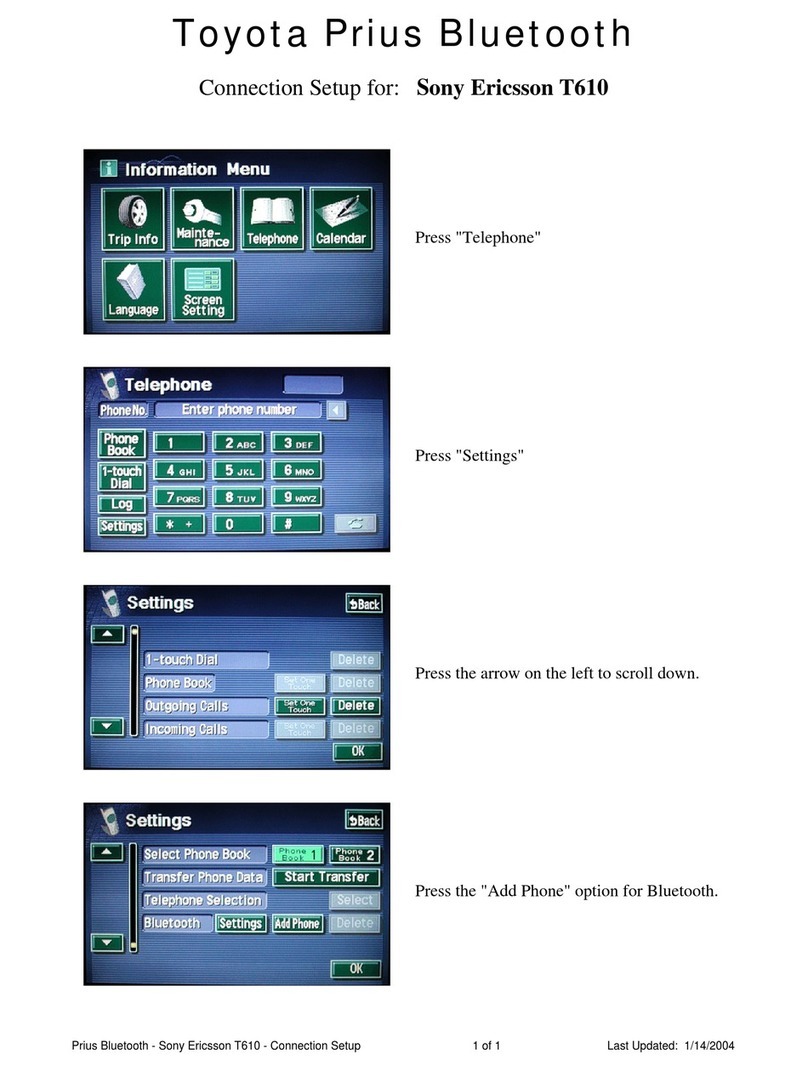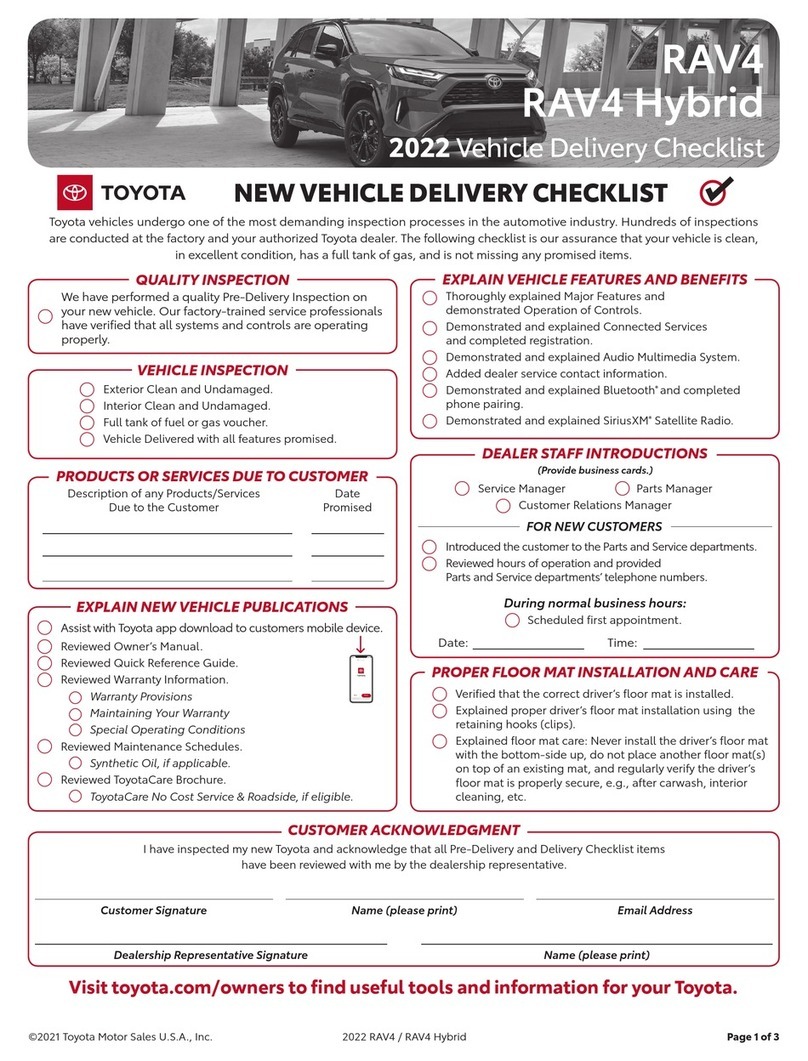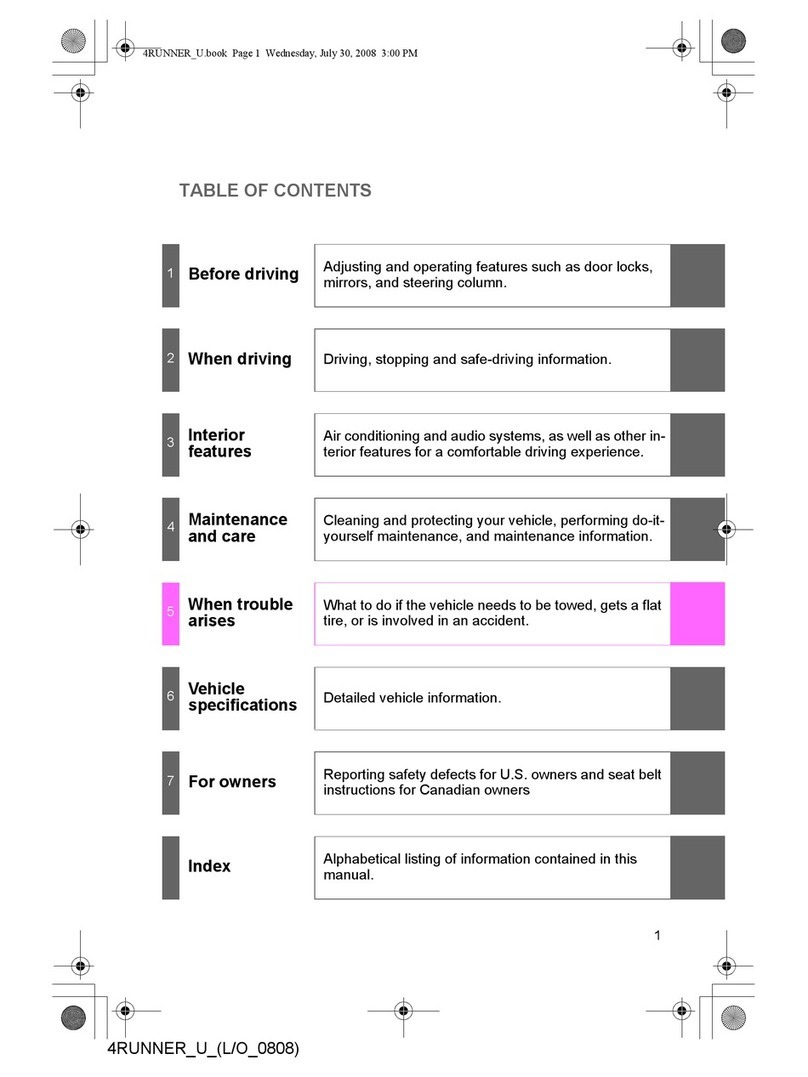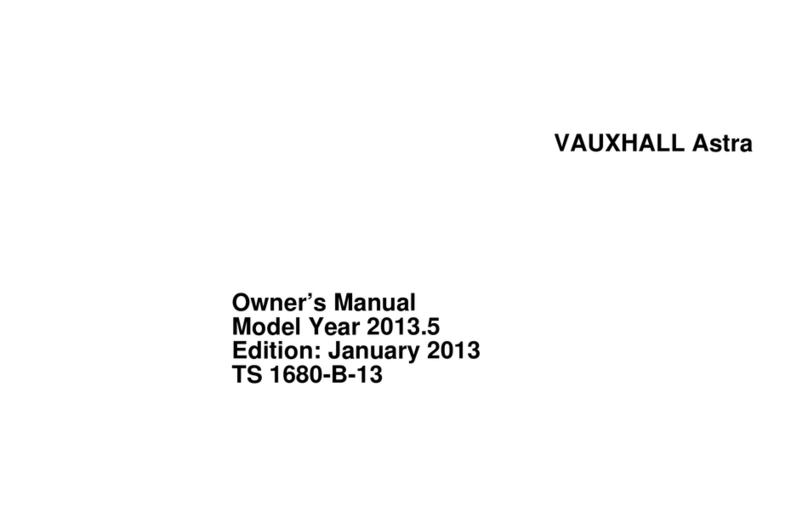Toyota Land Cruiser 1998 User manual
Other Toyota Automobile manuals

Toyota
Toyota 2015 Avalon User manual

Toyota
Toyota PRIUS 2008 User manual

Toyota
Toyota 2007 Highlander User manual

Toyota
Toyota COROLLA 2010 - User manual

Toyota
Toyota 2008 Sienna User manual

Toyota
Toyota 2013 Prius User manual

Toyota
Toyota 2022 RAV4 User manual

Toyota
Toyota 2012 corolla User manual

Toyota
Toyota PRIUS C 2016 User manual

Toyota
Toyota Corolla Hatchback 2023 User manual

Toyota
Toyota COROLLA MATRIX 2009 Operating manual

Toyota
Toyota PRIUS PHV 2013 User manual

Toyota
Toyota Tundra 2003 User manual

Toyota
Toyota Solara 2002 User manual

Toyota
Toyota 2005 Yaris User manual

Toyota
Toyota Corolla guide User manual

Toyota
Toyota SIENNA 2005 User manual

Toyota
Toyota CAMRY 2006 User manual

Toyota
Toyota 2009 4Runner User manual

Toyota
Toyota Rav 4 2006 User manual































